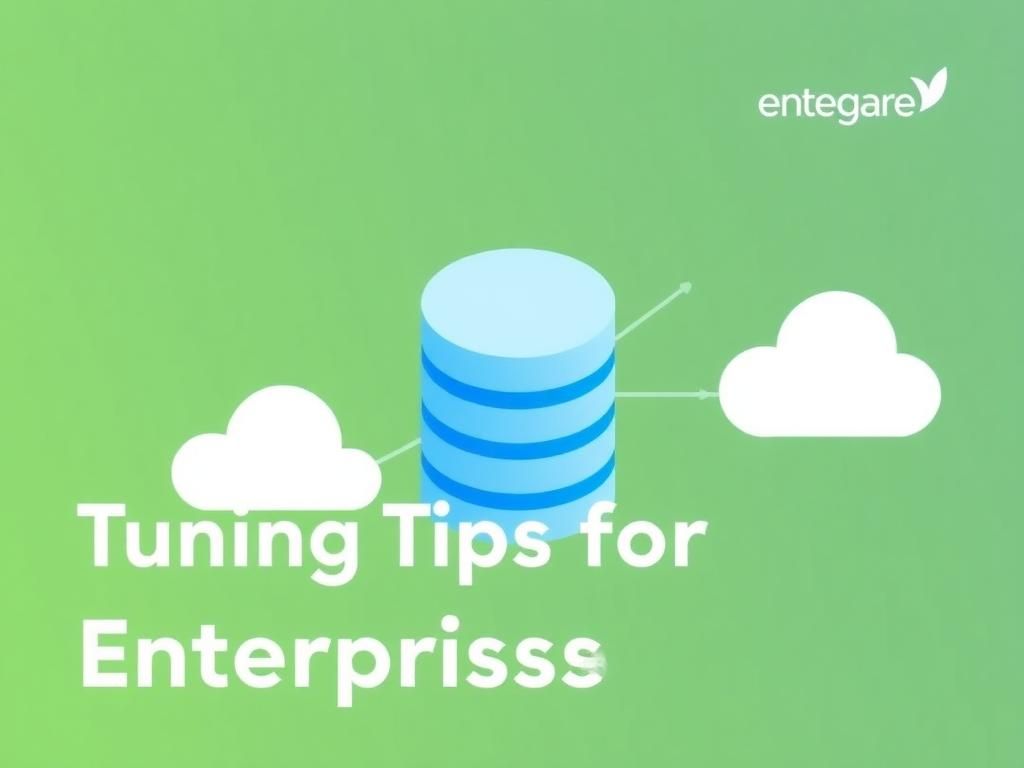Top Tips to Enhance Enterprise Database Performance
Discover essential strategies and tips to optimize and enhance the performance of your enterprise database for better efficiency and speed.

In today’s data-driven world, the performance of an enterprise database is crucial for maintaining efficiency and ensuring that applications run smoothly. As organizations increasingly rely on data to drive decision-making, tuning database performance has become a vital task for IT professionals. The following article delves into essential tips and strategies to optimize enterprise database performance effectively.
Table of Contents
Understanding Database Performance
Database performance encompasses how quickly and efficiently a database can process queries, handle transactions, and manage data. Key factors influencing database performance include:
- Query execution time
- Data retrieval speed
- Transaction throughput
- Resource utilization (CPU, memory, I/O)
Key Performance Indicators (KPIs)
Before diving into tuning techniques, it’s essential to define KPIs to measure database performance accurately. Here are some critical KPIs:
| KPI | Description |
|---|---|
| Query Response Time | The time taken to execute a query and return the results. |
| Transaction Throughput | The number of transactions processed within a set timeframe. |
| Resource Utilization | Monitoring CPU, memory, and disk I/O consumption. |
| Cache Hit Ratio | The percentage of database queries served from memory versus disk. |
1. Optimize Database Schema
1.1 Normalization vs. Denormalization
While database normalization reduces redundancy and improves data integrity, it may lead to complex queries that can slow down performance. It’s essential to find a balance:
- Normalize to eliminate redundancy.
- Denormalize to enhance query performance for read-heavy applications.
1.2 Indexing
Creating effective indexes can drastically improve query performance. Here are tips on indexing:
- Analyze frequently accessed columns and create indexes accordingly.
- Use composite indexes for queries filtering on multiple columns.
- Regularly rebuild and reorganize indexes to maintain performance.
2. Optimize Queries
2.1 Use of Query Execution Plans
Query execution plans provide insights into how queries are executed. Analyzing these plans can help identify bottlenecks and inefficiencies in query design.
2.2 Avoid SELECT *
Instead of using SELECT *, specify only the columns you need. This reduces the amount of data transferred and improves performance.
2.3 Limit Joins
Minimize the number of joins in your queries. Consider the following:
- Use subqueries or temporary tables to simplify complex queries.
- Evaluate the necessity of each join and remove any that are not essential.
3. Tune Database Configuration
3.1 Memory Allocation
Properly configuring memory allocation settings can significantly enhance performance:
- Increase buffer pool size for better caching of data pages.
- Adjust query cache settings based on workload requirements.
3.2 Connection Pooling
Implement connection pooling to manage database connections efficiently. This reduces the overhead of establishing connections and improves throughput.
4. Monitor and Analyze Performance
4.1 Regular Monitoring
Utilizing monitoring tools can help identify potential performance issues before they impact users. Key metrics to monitor include:
- Long-running queries
- Lock contention
- Resource bottlenecks
4.2 Performance Benchmarks
Establish performance benchmarks to evaluate improvements over time. Compare current performance against these benchmarks to identify trends.
5. Evaluate Hardware Resources
5.1 Upgrading Hardware
Sometimes, database performance can be improved through hardware upgrades:
- Increase RAM for better caching.
- Utilize SSDs for faster data access.
- Optimize RAID configurations for performance.
5.2 Load Balancing
Implement load balancing strategies to distribute database requests evenly across servers, reducing the risk of bottlenecks.
6. Regular Maintenance
6.1 Data Cleanup
Regularly review and purge unnecessary data to optimize database size and performance:
- Archive old records.
- Maintain suitable retention policies.
6.2 Update Statistics
Keeping database statistics up to date ensures the query optimizer has accurate data for making efficient execution plans.
Conclusion
Optimizing enterprise database performance is an ongoing process that requires careful planning, monitoring, and adjustments. By implementing these strategies and regularly assessing performance, organizations can ensure their databases meet the demands of modern applications and provide reliable access to critical data.
FAQ
What are the key factors influencing enterprise database performance?
Key factors include hardware resources, database configuration, indexing strategies, query optimization, and proper load balancing.
How can I optimize SQL queries for better database performance?
You can optimize SQL queries by using efficient joins, avoiding SELECT *, indexing columns used in WHERE clauses, and analyzing query execution plans.
What role does indexing play in database performance tuning?
Indexing helps speed up data retrieval operations by providing quick access paths to the data, thus reducing the time taken for query execution.
How often should I analyze and update my database statistics?
It’s recommended to analyze and update database statistics regularly, especially after significant data changes or at least once a month to ensure optimal query performance.
What tools can assist in monitoring and tuning database performance?
Tools such as SQL Server Management Studio, Oracle Enterprise Manager, and third-party solutions like SolarWinds Database Performance Analyzer can help monitor and tune database performance.
What is the impact of network latency on database performance?
Network latency can significantly affect database performance by slowing down data transfer rates, leading to longer response times for applications accessing the database.


